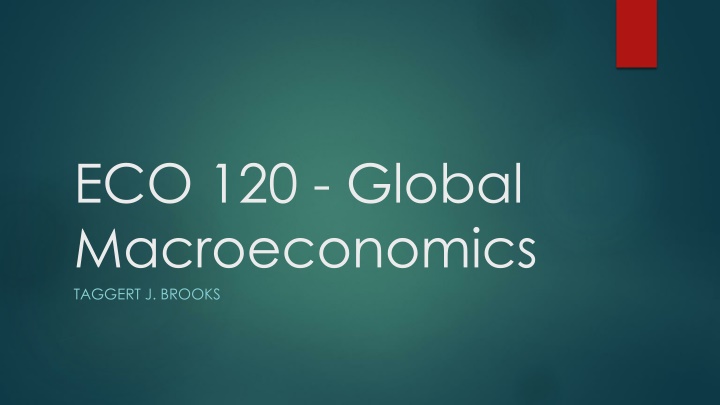
Understanding Money: Definition, Types, and Measurement
Explore the meaning of money, its roles, different types, and how the money supply is measured in the global macroeconomics context. Discover the significance of money as a medium of exchange, store of value, and unit of account, along with the various forms of money like commodity and fiat money.
Download Presentation

Please find below an Image/Link to download the presentation.
The content on the website is provided AS IS for your information and personal use only. It may not be sold, licensed, or shared on other websites without obtaining consent from the author. If you encounter any issues during the download, it is possible that the publisher has removed the file from their server.
You are allowed to download the files provided on this website for personal or commercial use, subject to the condition that they are used lawfully. All files are the property of their respective owners.
The content on the website is provided AS IS for your information and personal use only. It may not be sold, licensed, or shared on other websites without obtaining consent from the author.
E N D
Presentation Transcript
ECO 120 - Global Macroeconomics TAGGERT J. BROOKS
Module 23 DEFINITION AND MEASUREMENT OF MONEY
The Meaning of Money Money is any asset that can easily be used to purchase goods and services. Currency in circulation is cash held by the public. Checkable bank deposits are bank accounts on which people can write checks. The money supply is the total value of financial assets in the economy that are considered money.
Roles of Money A medium of exchange is an asset that individuals acquire for the purpose of trading rather than for their own consumption. A store of value is a means of holding purchasing power over time. A unit of account is a measure used to set prices and make economic calculations.
Types of Money Commodity money is a good used as a medium of exchange that has other uses. A commodity-backed money is a medium of exchange with no intrinsic value whose ultimate value is guaranteed by a promise that it can be converted into valuable goods. Fiat money is a medium of exchange whose value derives entirely from its official status as a means of payment.
Measuring the Money Supply A monetary aggregate is an overall measure of the money supply. Near-moneys are financial assets that can t be directly used as a medium of exchange but can readily be converted into cash or checkable bank deposits.
Measuring the Money Supply The Federal Reserve calculates the size of two monetary aggregates, overall measures of the money supply. M1: contains only money in circulation, traveler s checks, and checkable bank deposits (valued at $1,676.4 billion) M2: contains M1 and near moneys, financial assets that aren t directly usable as a medium of exchange but can be easily exchanged (valued at $8,462.9 billion)
